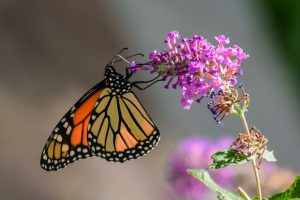…a blog written by David Smith, Buglife’s Social Change and Advocacy Officer
COP14 concluded in Uzbekistan this month with some key outcomes for nature. The COP (Conference of Parties) was the 14th to meet on the Convention on the Conservation of Migratory Species (CMS), an important environmental treaty of the United Nations, but perhaps less well-known than its Biodiversity and Climate Change equivalents. CMS provides a global platform for the conservation of migratory animals and their habitats.
The CMS published a key report and agreed on new measures to safeguard migratory species. The first-ever State of the World’s Migratory Species report reveals a worrying state of migratory species, with 44% suffering population decline and more than one in five threatened with extinction. The report detailed the threats migratory species face including habitat loss, degradation, and fragmentation. Climate change, pollution and invasive species are also having significant impacts.
What does this mean for invertebrates?

While perhaps not top of everyone’s minds when thinking about migratory species, several species of invertebrates also migrate. Some species such as worms and daphnia (small planktonic crustaceans) travel comparatively short distances, up and down in soil and water in response to changing temperatures and light exposure, and some travel vast distances such as the Monarch Butterfly. Invertebrates stand to benefit from many of the actions agreed upon at COP14, but some actions could support invertebrates beyond only those that are migratory.
Amongst the resolutions and decisions was the endorsement of a new scientific report “Insect Decline and its Threat to Migratory Insectivorous Animal Populations“, and a call for the CMS Scientific Council to develop new guidelines. The report sets out insect decline as one of the threats that contribute to the decline of many CMS-listed migratory species. Many migratory species rely on the availability of insect populations as food during migration and at other stages of their lifecycles. The report recognises land use change, climate change and pollution as the main drivers of insect decline globally and highlights the threats the decline in insects has on bats, fish, and birds. Smaller insect populations are associated with reduced food availability, lower body condition of birds associated with sub-optimal feeding and migratory and stop-over area shifts. The scarcity of insects in many areas in Europe during winter may lead to high energetic foraging costs for insectivorous bats.
Buglife welcomes the recognition of the rapid decline in insects by a major global treaty and the recommendations to restore sustainable populations of insects. These are two requirements of our recently published ‘Manifesto for Bugs‘ and we now encourage all nations as signatories to the treaty to ensure insects are acknowledged in their national action plans. We are also pleased to see this year’s World Migratory Bird Day will focus on the importance of insects and highlight the concerns related to their decreasing populations.
Lighting the (right) way

Another notable step taken at COP14 was new global guidelines addressing the impacts of light pollution on migratory species. These guidelines are a major step towards addressing light pollution, by formally recognising its impact on the natural world. Until now, artificial light has been side-lined as an ‘emerging’ pollutant and has not featured in efforts to restore biodiversity at a global level. The guidelines, while aimed at migratory bats and birds provide an excellent approach to bug-friendly lighting and if followed should benefit invertebrates as well as the target CMS Species. Alongside adopting the guidelines, the COP has recommended further research and consideration for addressing light pollution for more species and to update guidelines accordingly. The challenge now is to ensure that nations adopt these guidelines and set out how they will target light pollution. Buglife continues to call for binding targets on light pollution and the steps taken at COP14 will assist in strengthening these calls.
What’s next?
2024 is a vital year for invertebrate conservation, with General Elections in the UK and EU providing opportunities for new governments to strengthen and deliver on environmental commitments. In October the world will once again come together in Colombia for COP16 on the Convention of Biological Diversity (CBD). It will be the first chance for nations to present national-level plans to meet the biodiversity targets and provide a chance to stocktake progress. We hope that the progress made at CMS COP14 to recognise the importance of invertebrates and the challenges they face will continue into the next Biodiversity COP and put invertebrates front and centre.
Without restoring, and ensuring sustainable populations of our smallest creatures, it will be impossible to meet globally agreed targets to halt the decline and restore nature.
Main Image Credit: After six long days, CMS COP14 is gavelled to a close © IISD/ENB – Kiara Worth